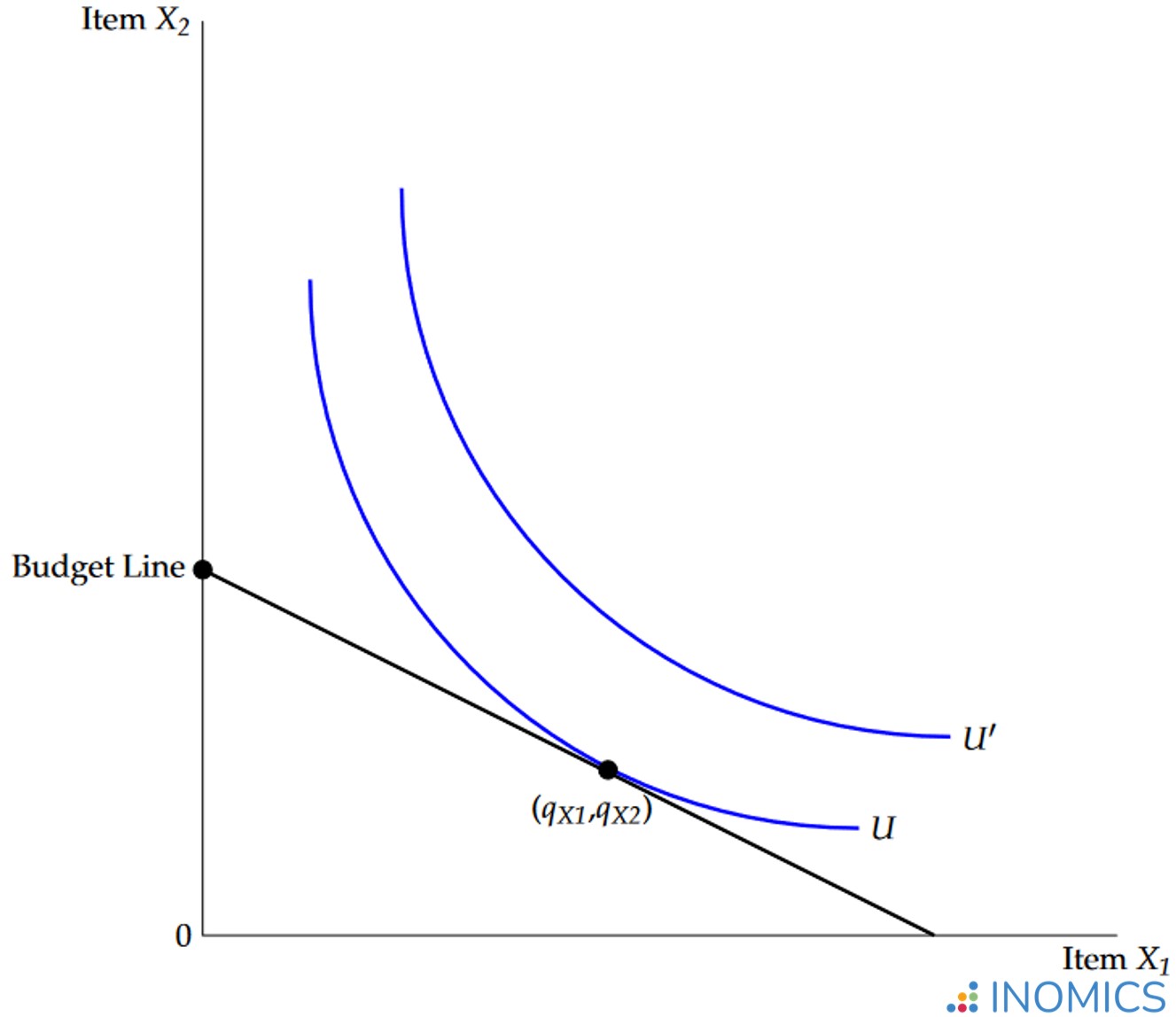The utility analysis suffers from a defect of the subjective nature of utility i.e., utility cannot be measured precisely in quantitative terms. In order to overcome this difficulty, the economists have evolved an alternative approach based on indifference curves. According to this indifference curve analysis, the utility cannot be measured precisely but the consumer can state which of the two combinations of goods he prefers without describing the magnitude of strength of his preference. This means that if the consumer is presented with a number of various combinations of goods, he can order or rank them in a ‘scale of preferences’. If the various combinations are marked A, B, C, D, E, etc., the consumer can tell whether he prefers A to B, or B to A or is indifferent between them. Similarly, he can indicate his preference or indifference between any other pairs or combinations. The concept of ordinal utility implies that the consumer cannot go beyond stating his preference or indifference. In other words, if a consumer prefers A to B, he can not tell by ‘how much’ he prefers A to B. The consumer cannot state the ‘quantitative differences’ between various levels of satisfaction; he can simply compare them ‘qualitatively’, that is, he can merely judge whether one level of satisfaction is higher than, lower than or equal to another.
The basic tool of Hicks – Allen’s ordinal analysis of demand is the indifference curve that represents all those combinations of goods that give the same satisfaction to the consumer. In other words, all combinations of the goods lying on a consumer’s indifference curve are equally preferred by him. The indifference curve is also called Iso-utility curve.
Indifference Curve is defined by A. L. Meyers as, “an indifference curve may be defined as a schedule of various combinations of goods which will be equally satisfactory to the consumer concerned.”

